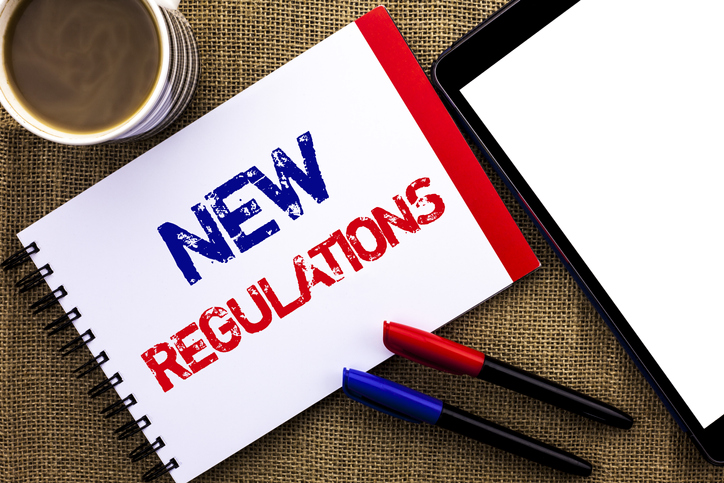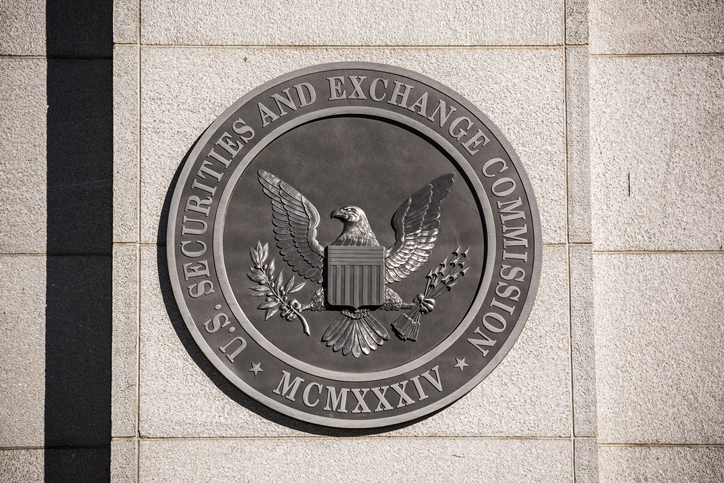This year saw a host of changes to California employment laws, and not all of them resulted from the COVID-19 pandemic. While the laws changed rapidly to address the needs of employees and employers during these increasingly uncertain times, California laws changed significantly with regard to all sorts of everyday activities. Among other things:
- Employees now have additional time to bring wage claims to the Division of Labor Standards Enforcement (DLSE)
- Employees can recover attorney’s fees for certain “whistleblower” claims
- Larger employers must submit pay data to the Department of Fair Employment & Housing (DFEH)
- The California Family Rights Act (CFRA) now applies to more employees and more employers
- Employees have more leeway to decide when sick leave is taken for “kin care”
- Victims of crime and abuse are more free to take leave
- The standards for no-rehire agreements have been loosened
- Adjunct faculty are now considered exempt
Add all that to the many changes adopted to deal with the pandemic, and 2020 made for a busy year for the California State Legislature.
Take a look for yourself at all of these significant changes:
FILING PERIOD FOR DLSE CLAIMS EXTENDED, AND ATTORNEY’S FEES ALLOWED UNDER LABOR CODE 1102.5 (A.B. 1947)
Assembly Bill 1947 amends the California Labor Code in three substantive ways. First, A.B. 1947 amends Labor Code section 98.7 by extending the time period for employees to file a complaint with the Division of Labor Standards Enforcement (DLSE). Currently, an employee who believes he has been wrongfully discharged or discriminated against in violation of any of California’s labor laws has six months after the occurrence of the violation to file a claim with the DLSE, but under the new legislation, an employee has one year to do so.
Second, A.B. 1947 amends Labor Code section 1102.5 to prohibit an employer from retaliating against an employee who reports an employer’s actual violation or noncompliance with local, state, or federal statutes or regulations; or who has a reasonable cause to believe that his/her employer violated or failed to comply with the law.
Lastly, the new legislation permits a court to award reasonable attorney’s fees to a plaintiff who prevails on a “whistleblower” action under Labor Code section 1102.5.
EMPLOYERS WITH OVER 100 EMPLOYEES MUST SUBMIT PAY DATA TO DFEH (S.B. 973)
Senate Bill 973 requires that private employers with 100 or more employees, and who are required to file an annual Employer Information Report (EEO-1) pursuant to federal law, must submit an annual pay data report to California’s Department of Fair Employment & Housing (DFEH).
Per the new legislation, the pay data report must include the number of employees by race, ethnicity, and sex during a single pay period between October 1 and December 31 of the reporting year, in each of the following categories:
- Executive or senior level officials and managers
- First or mid-level officials and managers
- Professionals
- Technicians
- Sales workers
- Administrative support workers
- Craft Workers
- Operatives
- Laborers and helpers
- Service Workers
Employers are also required to identify the number of employees by race, ethnicity, and sex whose annual earnings fall within each of the pay bands used by the U.S. Bureau of Labor Statistics in the Occupational Employment Statistics survey. To do so, the employer must calculate the total earnings for each employee for the entire reporting year, whether or not the employee worked a full calendar year. Lastly, the report must include the total number of hours each employee worked in each pay band.
To avoid duplicative reporting, if an employer is required to submit an EEO-1 under federal law (which provides substantially similar data), the employer may submit a copy of the same report to the DFEH. However, if an employer has multiple establishments, it must file a report for each establishment, as well as a consolidated report. Per S.B. 973, the first annual report will be due on or before March 31, 2021, and subsequent annual reports will be due on or before March 31 each year thereafter.
PROTECTED LEAVE COVERAGE EXPANDED TO SMALLER EMPLOYERS AND ADDITIONAL FAMILY MEMBERS (S.B. 1383)
The California Family Rights Act (CFRA) ensures job-protected leave for California employees to bond with a newborn, care for a family member with a serious health condition, care for their own illness, or address a military exigency. Senate Bill 1383 significantly expands the application of CFRA in several respects.
Smaller Employers Are Now Covered. The CFRA previously applied to all public employers and private employers with 50 or more employees within 75 miles of the worksite. S.B. 1383 expands CFRA leave to private employers with at least 5 employees, and eliminates the requirement that employees work within 75 miles of the worksite. Therefore, employees who work for such employers will now be able to take up to 12 weeks of unpaid family care and medical leave, which includes leave for an employee to care for themselves, a family member, the birth or adoption of a child, and a qualifying military exigency. This will significantly impact small employers who were not previously required to provide such leave.
Expansion of “Family Members.” The CFRA currently allows employees to take leave to care for several purposes, including to care for a “family member,” which is defined to include a spouse, parent, or child (if the child is a minor or dependent adult). S.B. 1383 expands the scope of “family members” to include domestic partners, siblings, grandparents, grandchildren, children of a domestic partner, and adult children (whether or not they are a dependent). Therefore, large employers who were already covered by the CFRA will need to change their existing policies and practices to provide leave for a wider definition of family members.
New “Stacking” Issue with the federal FMLA. For employers with at least 50 employees who are covered by both the CFRA and Family Medical Leave Act (FMLA), the CFRA’s more expansive definition of “family member” may result in employees “stacking” leave under the two laws for varying purposes. Leave under the CFRA and the FMLA generally runs concurrently, meaning an employee is only eligible for a total of 12 weeks’ unpaid leave under both laws. However, the CFRA will now allow family leave for more family members than the FMLA permits (which limits family leave to care for an employee’s spouse, child, or parent who has a serious health condition). Therefore, an employee covered by both the CFRA and FMLA can take 12 weeks’ leave to care for a sibling under the CFRA, and another 12 weeks’ to care for a spouse under the FMLA, totaling 24 weeks’ leave.
Deletions from Existing Law. S.B. 1383 deleted two provisions from the CFRA. First, if both parents are employed by the same employer, an employer was previously not required to provide more than 12 weeks total leave for the birth, adoption or foster care placement of a child. Employers will now be required to provide 12 weeks’ leave to both employees for such purposes. Second, S.B. 1383 removes language that allowed an employer to refuse to reinstate highly compensated employees where necessary to prevent substantial economic injury.
What Should Employers Do Now?
S.B. 1383 goes into effect on January 1, 2021. Small businesses who were not previously covered by the CFRA need to develop policies and procedures to implement and administer the new leave requirements. Employers who were previously covered by CFRA need to update their policies to incorporate the revisions to CFRA, and ensure that FMLA and CFRA properly track when such leaves run concurrently or separately.
PAID SICK LEAVE DESIGNATION FOR KIN CARE (A.B. 2017)
California Labor Code Section 233 requires employers to permit employees to use their accrued and available sick leave entitlement to attend to the illness of a family member (known as “kin care”). It also prohibits employers from denying an employee the right to use sick leave or taking specific discriminatory action against an employee for using, or attempting to exercise the right to use, sick leave to attend to such an illness. “Family member” for purposes of kin care includes an employee’s child, parent or guardian, spouse or registered domestic partner, grandchild, grandparent, and sibling.
Assembly Bill 2017 revises Labor Code section 233 to provide employees the sole discretion to designate such leave as paid sick leave.
What Should Employers Do Now?
Employers should review their paid sick leave policies and implement procedures that allow employees to make such designations for kin care. Employers may also want to consider differentiating kin care from other protected leaves in their processes for tracking paid sick leave.
EXPANDED LEAVE PROTECTIONS FOR VICTIMS OF CRIME OR ABUSE (A.B. 2992)
Assembly Bill 2992 expands existing prohibitions on employers from discharging, discriminating, or retaliating against employees who are crime victims who take time off from work to obtain medical attention for injuries suffered, psychological counseling, mental health services, or similar relief.
Prior to A.B. 2992, such protections extended only to victims of domestic violence, sexual assault, or stalking. By amending Labor Code sections 230 and 230.1, these protections now broadly apply to crime victims outlined in Government Code section 13951 which comprehensively include any crime victim who has experienced physical or mental injury, or a threat of physical injury, including persons who experience the death of a family member as the result of a crime. Employee crime victims are covered regardless of whether any person is ever arrested for, prosecuted for, or convicted of committing the alleged crime. To qualify under A.B. 2992, however, an employee must provide advance notice of the requested absence unless it is unfeasible to do so. In those circumstances, the employee must provide their employer with a police report, court order, or other form of documentation that verifies that a crime or abuse occurred within a “reasonable” amount of time.
NO-REHIRE AGREEMENTS AND NEW “GOOD FAITH” REQUIREMENT (A.B. 2143)
Assembly Bill 2143 augments existing law prohibiting “no-rehire” clauses in settlement agreements in two important ways.
Currently, employers are prohibited from including “no-rehire” clauses in settlement agreements that prohibit, prevent, or otherwise restrict an aggrieved employee from obtaining future employment with an employer where the aggrieved employee has filed a claim against the employer either in court or through the employer’s internal compliant process.
Born out of the #MeToo movement, the policy behind the existing law was to avoid situations where a victimized employee was forced from their employment in connection with a settlement agreement while their harasser or abuser remained employed. Following the passage of A.B. 2143, an aggrieved employee must not only have filed a claim against their employer for the prohibition to apply, but the claim must have been filed in “good faith.” Notably, A.B. 2143 does not define or clarify what a “good faith” showing would require.
Second, A.B. 2143 creates additional exceptions from the prohibition if the employer has documented its own good faith determination that the aggrieved employee: (a) engaged in sexual harassment or sexual assault themselves, or (b) engaged in criminal conduct, either of which the employer must have documented prior to the filing of the aggrieved employee’s claim. The inclusion of a “no-rehire” clause in an employment settlement agreement under those circumstances would be permissible under the new law.
ADJUNCT FACULTY ARE NOW EXEMPT PROFESSIONALS (A.B. 736)
Although adjunct professors historically performed exempt duties and qualified as exempt professionals under federal law, they typically did not meet the full-time salary threshold under California law to be exempt from California wage and hour laws, due to the part-time nature of their work.
A recent surge of litigation caused some colleges and universities to reclassify their adjunct faculty as hourly paid employees. As a result, the Association of Independent California Colleges and Universities sponsored Assembly Bill 736, which the Service Employees International Union supported, to allow independent colleges and universities in California to appropriately treat adjunct faculty as professional employees.
Effective September 9, 2020, A.B. 736 amends Labor Code Section 515.7 to expand the California professional exemption under Industrial Welfare Commission Wage Order Nos. 4-2001 and 5-2001 to include part-time faculty employed by independent institutions of higher education in California, as long as the employee meets the existing professional exemption duties test, as well as a new salary test.
The duties test requires the employee to both: (1) be engaged in an occupation commonly recognized as a learned or artistic profession, and (2) customarily and regularly exercise discretion and independent judgment in the performance of their duties. The law further details work recognized as a learned or artistic profession.
The new salary test also mandates that employees who meet the duties test qualify for the exemption if they either: (1) are paid a monthly salary that is at least two times the state minimum wage for at least 40 hours per week; or (2) are paid per course or laboratory in accordance with rates set forth in Labor Code Section 515.7 (i.e., $117 per hour for 2020; $126 per hour for 2021; $135 per hour for 2022; with increases thereafter coinciding with increases in the state minimum wage).
Independent higher education intuitions with adjunct faculty who are classified as exempt should consult with counsel to review their employees’ duties and compensation structure to ensure compliance with Labor Code Section 515.7.
COVID-19 AND WORKERS’ COMPENSATION (S.B. 1159)
Governor Newsom previously issued Executive Order No. N-62-20 (the “Order”), which created a rebuttable presumption that any employee who contracted COVID-19 contracted the illness at work for workers’ compensation purposes. The Order expired July 5, 2020; however, the California legislature passed S.B. 1159, adding sections 3212.86, 3212.87, and 3212.88 to the California Labor Code to address COVID-19 in the workers’ compensation system. These added provisions create a new framework for COVID-19 related workers’ compensation claims and impose strict reporting requirements on employers.
Rebuttable Presumption. If an employee suffers from illness or death resulting from COVID-19, it is presumed that employee contracted the virus at work. An employer may rebut this presumption, but must do so quickly.
If the date of injury is prior to July 6, 2020, the employer’s claims administrator has 30 days to deny the claim. If the date of injury is on or after July 6, 2020, the claims administrator has 45 days to deny the claim. If the claims administrator does not deny the claim, the claim is presumed compensable.
Evidence an employer may use to rebut the presumption includes any measures taken by the employer to prevent transmission of COVID-19, and any evidence that an employee may have contracted the virus elsewhere.
Notably, the presumption is only rebuttable with evidence that is discovered subsequent to the applicable investigation period. Meaning: evidence discovered within the 30 and 45 day deadlines discussed above cannot be later used to rebut the presumption of compensability. However, if an employee is “essential,” as defined by Labor Code section 3212.87 (active firefighters, peace officers, or healthcare workers) the 30-day deadline applies regardless of the date of injury.
Employees Covered by the Presumption. Labor Code sections 3212.86 and 3212.88 apply to all employees who:
- Test positive during an outbreak at the employee’s specific place of employment; and
- Whose employer has five or more employees.
An “outbreak” exists if within 14 calendar days one of the below occurs at a specific place of employment:
- “If the employer has 100 employees or fewer at a specific place of employment, 4 employees test positive for COVID-19;”
- “If the employer has more than 100 employees at a specific place of employment, 4 percent of the number of employees who reported to the specific place of employment, test positive for COVID-19;” or
- “A specific place of employment is ordered to close by a local public health department, the State Department of Public Health, the Division of Occupational Safety and Health, or a school superintendent due to a risk of infection with COVID-19.”
“Specific place of employment” is anywhere the employee performs work at the employer’s direction; however, it does not include an employee’s home or residence. If an employee performs work at multiple locations, the employee’s positive test must be counted at each location when determining whether there is an outbreak.
When the Presumption Applies. For the presumption to apply, the below conditions must be met:
- “The employee tests positive for COVID-19 within 14 days after a day that the employee performed labor or services at the employee’s place of employment at the employer’s direction;”
- The last day that the employee performed work at the employee’s place of employment at the employer’s direction was on or after March 19, 2020 and before July 5, 2020 (Labor Code section 2312.86) or on or after July 6, 2020 (Labor Code section 3212.88); and
- “The employee’s positive test occurred during a period of an outbreak at the employee’s specific place of employment.”
Employers Can Require Exhaustion of COVID-19 Related Benefits. If the presumption applies, the employee is entitled to “full hospital, surgical, medical treatment, disability indemnity, and death benefits.” However, if an employee is eligible for paid leave benefits the employee would not have received but for COVID-19, those benefits must be exhausted before using any temporary disability. If an employee has no benefits available to them, then the employee must be provided with benefits without any waiting period.
Employer Reporting Requirements. Labor Code section 3212.88(i) requires employees who know, or reasonably should know, that an employee has tested positive for COVID-19 report the below information to their workers’ compensation claims administrator (via electronic mail or facsimile) within three business days:
- An employee has tested positive (the employer is prohibited from providing personally identifiable information unless the employee has filed a claim under Labor Code section 5401);
- The date the employee tested positive (i.e. the date the specimen was collected for testing);
- The specific address or addresses of the employee’s place of employment during the 14 days preceding the date of the positive test; and
- The highest number of employees who reported to work at the employee’s place of employment during the 45 days preceding the employee’s last day of work.
Retroactive Reporting Requirements. An employer who is aware of an employee testing positive on or after July 6, 2020 and before September 17, 2020, must also prepare a report to the claims administrator (via electronic mail or facsimilia) within 30 business days of September 17, 2020 (i.e., October 17, 2020). The report must contain the same information as outlined above, except rather than identifying the highest number of employees who reported to work at the employee’s place of employment during the 45 preceding days, the employer is instead required report the “highest number of employees who reported to work at each of the employee’s [work site] on any given work day between July 6, 2020 and September 17, 2020.
Penalties for Submission of False and/or Misleading Information. Any employer, or agent acting on behalf of the employer, who intentionally submits false or misleading information, or fails to submit the required reporting information outlined above, is subject to a civil penalty in the amount of $10,000.
COVID-19 NOTICE TO EMPLOYEES (A.B. 685)
On September 17, 2020, Governor Newsom signed Assembly Bill 685, placing strict COVID-19 related reporting requirements on employers and expanding the Division of Occupational Safety and Health’s (Cal/OSHA) powers.
While A.B. 685 does not go into effect until January 1, 2021, employers should act now to review existing policies and put procedures in place to ensure compliance with A.B. 685 in the new year.
When Notice to Employees is Required. When an employer, or its representative, receives notice that a “qualifying individual” was in the workplace, the employer is required to issue notice within one business day to affected employees.
A “qualifying individual” is any person who:
- Has a confirmed case of COVID-19;
- Has a positive COVID-19 diagnosis from a licensed health care provider;
- Has received a COVID-19-related order to isolate from a public health official; or
- Has died due to COVID-19.
Who Must Be Notified. The employer must notify all employees, including employees of any subcontractors, who worked as the same worksite during the infectious period and the employees’ “exclusive representative,” if any.
Information the Employer Needs to Provide. Notice provided to employees must:
- Advise the employee that he/she “may have been exposed to COVID-19;”
- Be in writing;
- Be in English and any other language understood by the majority of employees;
- Transmitted to employees in the same manner the employer normally uses to communicate with employees.
- Identify COVID-19 related benefits the employees may be entitled to under federal, state, or local law and under the employer’s policies;
- Identify antiretaliation and antidiscrimination protections of the employees; and
- Identify the disinfection and safety plan the employer plans to implement and complete pursuant to Centers for Disease Control guidelines.
Importantly, the notice should not disclose the names of any infected employees. Employers must maintain records of any written notifications made pursuant to A.B. 685 for a period of three years.
Notice to Local Health Officials. In addition to notice to employees, an employer may also be required to notify the local public health agency in the jurisdiction of the worksite if the employer is experiencing an “outbreak” within 48 hours. An “outbreak” is “three or more laboratory-confirmed cases of COVID-19 among employees who live in different households within a two-week period.” (See the California Department of Public Health’s COVID-19 Employer Playbook – Supporting a Safer Environment for Workers and Customers.)
Notice to local health officials must contain the following information:
- Name, number, occupation, and worksite of a qualifying individual; and
- Business address and NAICS code of the worksite.
The employer is required to provide further notice of any subsequent laboratory-confirmed cases of COVID-19 at the worksite.
Exemptions to Notice and Reporting Requirements. The above notice and reporting requirements apply to all private and public employees, with two exceptions: (1) health facilities as defined in section 1250 of the Health and Safety Code; and (2) employees whose regular duties include COVID-19 testing or screening, or who provide patient care to individuals who are known or suspected to have COVID-19, unless the “qualifying individual” is also an employee at the same worksite.
Cal/OSHA’s Authority to Shut Down a Workplace Due to COVID-19. Current law vests Cal/OSHA with the authority to prohibit entry into a workplace or prohibit use of dangerous equipment in the workplace where there is an imminent hazard to employees. A.B. 685 specifically extends this authority to COVID-19 related issues.
If Cal/OSHA finds that a workplace, operation, or process exposes employees to a risk infection, it has the authority to prohibit entry to the workplace or the performance of an operation and/or process. However, the restriction must be only to the areas of the worksite that pose a risk to employees. Cal/OSHA must notify employers and post conspicuous notice.
Serious Violation Citations Regarding COVID-19. A.B. 685 removes the prior 15-day notice period for COVID-19-related serious violation citations. Typically, Cal/OSHA will provide at least 15 days’ notice before issuing a citation. Now, and until January 1, 2023, Cal/OSHA no longer must provide 15 days’ notice, but can issues citations immediately. Employers are still able to contest the citation through the appropriate procedures.
* * *
CONCLUSION
While many of us are ready to put 2020 in the rear-view mirror, challenges for the new year abound. We wish everyone a happy, healthy and safe holiday season, and we are ready to assist you with all of your employment needs in the new year.
This special report was compiled by Michelle Freeman, Alison Hamer, Dan Handman, Ferry Lopez, Adam Maldonado, Anna Pham, and Felicia Reid. For more information, please contact any of them, or the Hirschfeld Kraemer lawyer who normally provides your legal counsel.















